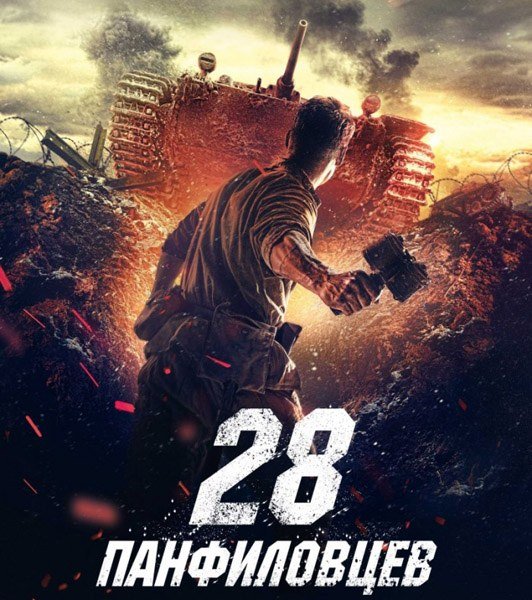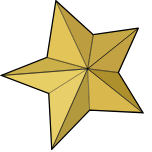Wikipedia

On April 21, the Russian Wikipedia chose its thousandth Election Article: Twenty-eight Panfilovites. So it fell out that I wrote it, basically, I did. It is interesting that after that I received many questions about the criteria for selecting articles. I would like to take this opportunity to talk about how public review works in this amazing crowdsourcing project and how to raise your level of critical thinking by participating in the encyclopedia.
And let’s delete it?
First, someone writes a small article, and someone else immediately exposes it to the removal. For example, because it is small. Or because it is on an irrelevant topic.
A discussion section is created, such as this one.
The discussion is not a vote, but rather a discussion. Participants swear, appealing to the rules. The summing up (the judge) weighs the pros and cons. If a decision is made to leave the page, a corresponding dice appears on its page of discussion. After that, to expose the article to removal becomes much more difficult.
Good article

If someone is working on an article, it can get the status Good-natured. Good articles meet the rules of neutrality, the availability of references to sources and requirements for registration, but they are too small to qualify for a more serious status. The authors expose the article for status, after which there is a lingering discussion, such as here. There are a lot of good articles, it’s easy to get an asterisk and very nice, and some participants are busy with bringing hundreds of articles to the status of good ones.
Consensus and War of Edits
During discussions and revisions, the concept of consensus is actively used. A curious picture showing how Wikipedia comes to an agreement. On the x-axis is the editorial of the article, and y visualizes the color to whom this or that piece of the article belongs. Do you see a sawtooth structure? This is in the paragraph about chocolate, one participant added some proposal, and another canceled it. And the first canceled the cancellation. Well, and so on. By the way, the topic of the article on the picture is “Chocolate”. To all comers, I propose to present what is happening on the article about abortion, feminism or Trump.

According to the rules of Russian Wikipedia, you can get a ban for this. After the first cancellation of the editing, participants must contact each other and begin a search for a consensus. In the wiki it is defined in a peculiar way. If I made a correction about which a significant number of my co-authors have learned, and none of them has canceled it, then everyone is happy with everything, and the article is consensual. In discussions and dialogues, the consensus is as follows:
Participant A : Here at this point in the article you have to redo this and so.
Participant B : It seems to me that it is enough to remake so and so (justifies why)
Participant A : (resentfully silent)
Well, if you do not say anything, OK. And if he continues to insist, giving all the new arguments – someone may come third and still force to do as asked, or find another compromise. In the most difficult cases, the case is transferred to the Arbitration Committee, formed of the most experienced participants, who listens to the opinions of the parties, makes a decision and has the right to punish those who, after making the decision, do not obey. If the topic that causes constant disputes continues to float, an article may appear that clarifies the rules. For example, there is the VP law: the RBM, which describes what can and can not be said in articles about Ukraine and the Crimea.
Reviewing

At some point the co-authors begin to feel that their article covers the topic quite fully. In order to get a portion of constructive criticism, they expose their creation to the Review, as here. My article was about a military film, and I needed feedback from historians and art critics in the field of cinema.

There are more comments and suggestions, the author can declare the review completed when he sees that the discussion is quiet. Actually, putting up for peer review and communication in thematic Portals is the main way to attract attention to your article. The more mistakes are revealed at this stage, the more cavils there are, the easier it will be on the nomination.
Good article

The next step is to put the article on the Good List. Now there are 2,750 of them in the entire Wikipedia. A good article will hang on the main page from one to two days, which is good for traffic. Two splashes are visible on the chart: the largest is in the weeks when the film was released and the second one, the smaller one, in the days of being on the Main.

In order for the article to be recognized as Good, among other requirements, it must be complete. How can this be understood? First, look at the list of other Good and Selected articles on a similar topic and study the structure of their sections. For example, in the article about the film there should be a section that describes the details of creating a picture, the perception of the film by criticism, box office fees, etc. In the case of the Panfilovites, I had a huge amount of news as a source material – here the vertical search engines for news from Google and especially Yandex are great. Federal news should be preferred regional, even better if the source is academic.
Authoritative sources
In general, Wikipedia has taught me to handle sources much better than two years in graduate school. The authority of the source is determined by two things: who is the author and who publishes (responsible for the material and reviews). For example, we write a section on how the film was received by film critics. Who will be the authoritative source for this section? Is it possible to insert there the opinion of Goblin-Puchkov or Bad Comedian? We start reading the rules, incidentally communicating with other authors of articles about the cinema. We come to the conclusion that the most authoritative critics are members of guilds and unions of cinematographers, columnists on the subject of cinema and staff film reviewers of long-standing publications, and, of course, people who have publications in academic journals on cinematography: The Art of Cinema, Kinovedcheskie zapiski, Sense
. ]
Even more interesting when it comes to authoritative sources in the field of history. For example, if a well-known film critic starts to talk about the historical basis of the film, his words can be easily passed by the ears – he went beyond his field of expertise.
For myself, I worked out a kind of authoritative source scale (see also the guide in English Wikipedia):
- Is the source primary or secondary? The memoirs of your grandfather (or Comrade Zhukov) or the report of the General Prosecutor’s Office of the USSR are primary sources. This is a raw material, which historians should understand: compare with other documents, identify contradictions, etc. After the historian does this, he publishes an article in the academic journal – and this is our main support. To use the primary in Wikipedia is highly discouraged, as it is often equated with banned original research.
For secondary sources, we can look at the following factors. - Does the author have publications in VAK history magazines?
- Does the author have a specialized historical education?
- Where was the opinion expressed?
- In his blog or non-peer-reviewed book? Hence, no one checked it, and the level of confidence should be minimal.
- In the media or in an interview with someone? Already better, especially if the level of publication is federal. There is a possibility that frank stupidity will not be missed in the editorial office, but considerable risk that the publication will artificially increase the degree of sensationalism is enough to recall the RenTV channel. The media should be treated with extreme caution, because their goal is not a search for truth, but rather a report of the editorial position.
- On the site of an academic organization, such as the Russian Academy of Sciences? Not bad, because if you say unreasonable gibberish there, reputational risks will be borne by the whole academy.
- In a peer-reviewed article or a peer-reviewed monograph? Ideally, you can cite without fear, but first check whether this article is cited – perhaps in other articles there will be a refutation, clarification or criticism of your source. ELibrary and Google Scholar – the best helpers in the search for information, if you write in Russian, for the English section of search engines much more.
- Is the source available for verification? A paper book is not as good as an electronically available publication. If the source is large (for example, a three-hundred-page brick), then it is absolutely necessary to refer to a specific page and quote from there.
At the stage of nominating an article for Good status, each phrase containing any significant fact should be supported by a reference to a good authoritative source. The list of sources by this time, most likely, will grow to unimaginable scales.
Selected article

What is the reward waiting for the writer who wrote the selected article? A week on the Home page, community respect and a huge influx of readers, co-authors and guys who put the letters e. And also some immunity to erratic corrections – in selected articles vandalism and unconfirmed claims are quickly rolled back by other participants.
It seems to me that not Every article can be elected. Some topics are so explosive that in the relevant articles will be waged an eternal war of edits. For example, it is very difficult to imagine a consensus article on Joseph Stalin, proper nutrition, or the accession of the Crimea. Other topics are so vast that the article will always seem unfinished: for example, an article about the US, Germany or, say, the article Homo Sapiens. If you are lucky with the topic, then the election will not be associated with excessive pain. Just get ready for the fact that you will have more reviewers, and many of them will be more competent than you. There will be historians you could not find, when they were needed, there will be film experts, who will be surprised at how stupidly you quoted critics. During this period, you can learn a lot, if you remember that your goal is to improve the article, and not to prove to someone that you are right.
The formal requirements at this stage are the same as in the case of good articles, but their colleagues-wikipedists follow their performance much more closely. The letter ё will be forgiven (after the election, the hordes of editors fly over the e), but for the slightest hint of engagement or low-quality sources they will long carry the person on the table.
Images and video
Separately I want to say about pictures, photos and copyrights. The Wikimedia Foundation employs two hundred people. At the same time Wikipedia is the fifth in the world in terms of attendance. The fund can not afford to hire thousands of lawyers, so the copyright policy is extremely tough – and one must be prepared for it. For any image should be indicated source (preferably – the site of the photographer), author and license. Best of all – if the author of the photo will write a license on his website or send a letter to the Fund, in which he says that his image can be used for Creative Commons. In practice, this means that either the photos in your article will be bad / missing, or you will learn how to contact photographers and convince them to help you.
I came to the conclusion that there is a presumption of guilt for images – if you uploaded Picture and in the source something is not crystal clear, the image is deleted, and it is necessary to undergo the restoration procedure. The best strategy in this case is to accept the rules, and immediately after downloading, contact those who have the right to delete: say, buddy, look at my files and check if everything is good in them with the licenses. On Wikimedia Commons (a repository of images and videos from which you can use them in all Wikipedia), I do not even know how to survive in a different way.
Oh yeah! Video! In Wikipedia, you can not just take and put the video in any human format. Only the most free and open source codecs! In general, get ready for the fact that you have to collect your ffmpeg. The magic command looks like this:
./ffmpeg -i ~ / Pictures / panf / panfilov mechanical hand.mp4 -f ogg -c: v libtheora -q: v 9 -c: a libvorbis -q: a 6 mechanical_hand.ogv Summary
While I was writing an article, I had time to get acquainted personally with the film crew of the film, visited the creative laboratory of the company that did special effects, To the field of field surveys and consulted with the historical consultants, acquired a bunch of new Wikipedist friends and learned a lot. What is interesting is that when you say that you write an article on the wiki, you are beginning to be perceived roughly as a New York Times journalist – everyone knows how popular this resource is. Indeed, by editing an article, you can bring a lot of benefits, because wikis have long become a reference resource by default for many people. Wikipedia will exist for as long as human civilization, and I highly recommend that everyone try to contribute to it.








